This is an AGFA Memo, a compact folding camera made in Binghamton, New York by the AGFA ANSCO Corporation starting in 1939. This version of the Memo is a less common variant that shoots 18mm x 24mm single frame images on ANSCO’s Memo film, which is very similar to AGFA’s own Karat film which they produced at the same time. It uses double perforated 35mm film fed into hollow cassettes which travel into a take up cassette using a ratcheting claw film advance and does not require rewinding at the end of a roll. The Memo is a solidly built and capable camera that when folded shut is extremely compact and portable. The AGFA Memo is unique as one of the only AGFA branded cameras to be made in the United States.
Film Type: Half Frame AGFA/ANSCO Memo (Double Perforated 35mm film)
Lens: 2 inch (~50mm) f/3.5 AGFA Memar uncoated 3-elements in 3-groups
Focus: 3.5 feet to Infinity
Viewfinder: Scale Focus Optical Viewfinder
Shutter: AGFA Leaf
Speeds: T, B, 1/2 – 1/250 seconds
Exposure Meter: None
Battery: None
Flash Mount: None
Weight: 519 grams
Manual: None
How these ratings work |
The AGFA Memo is a strange German camera built in the United States using a film format that was original developed for a different camera, by a company who already had a competing film format. It has a familiar nickel and leather design typical of German cameras, but with a very modern layout of controls. Using a ratcheting film advance on the back of the camera, the Memo supports use of regular 35mm film hand fed into two empty cassettes so although the original film is no longer made, reloading these is very easy to do. The images from the modest Memar lens are excellent, with just the right amount of softness to give both color and black and white images a very classic look, much like you’d expect an 80 year old camera to produce. Highly recommended. | ||||||
| Images | Handling | Features | Viewfinder | Feel & Beauty | History | Age | |
| 2 | 2 | 1 | 1 | 2 | 1 | 40% | |
| Bonus | none | ||||||
| Final Score | 12.6 | ||||||
History
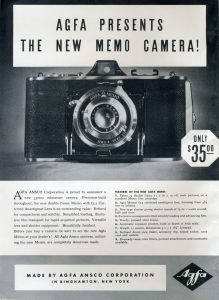
The AGFA Memo has a curious history whose mere existence is completely puzzling. For starters, it is the only AGFA branded camera that I am aware of which was made in the United States, likely by their American subsidiary ANSCO.
ANSCO, whose history dates back to the the early 1840s as E. Anthony & Company and later Anthony & Scovill, was acquired by the German optics firm AGFA in 1928 and over the course of the next several decades would release a large variety of AGFA designed cameras in the United States either under the ANSCO brand, or a combined AGFA/ANSCO brand. An example of a co branded camera is the AGFA/ANSCO B2 Commander, which was an upgraded version of the ANSCO B2 Speedex. Featuring both companies names on the camera, the camera was a German design, built in the United States, and sold by ANSCO.
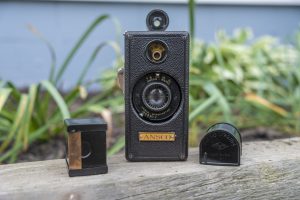
Another very odd thing about the AGFA Memo is that it uses a type of 35mm cassette to cassette film first developed by ANSCO more than a decade earlier for the 1927 ANSCO Memo. Using double perforated 35mm film, ANSCO’s Memo film transported from a supply to a take up cassette by way of a spring loaded ratcheting claw which was similar to motion picture cameras of the era.
ANSCO’s Memo sold well, but seemingly not well enough for them to continue making other cameras that used the film, at least not until 12 years later. But by 1939 when the AGFA Memo was first sold, AGFA had already developed and released a completely different cassette to cassette 35mm film format for their own AGFA Karat three years earlier.
The release of a new camera by a German company built entirely in the United States, without any reference to ANSCO, using a special type of film only used in one other camera 12 years earlier, that was very similar to yet another type of film that same company had already released three years earlier is very strange.
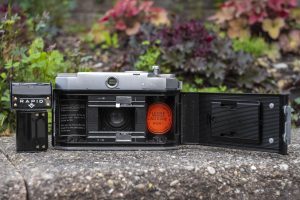
If the AGFA Memo was meant to be the ANSCO Memo II, why not just call it that? Perhaps AGFA was struggling to get their own Karat cameras and film imported into the United States. so they decided to build a similar camera here, but if so, why not just make it use Karat film? Why support a 12 year old film format, that I have to imagine wasn’t very common? Karat and Memo cameras both use the same type of double perforated 35mm film stock, and use a similar claw type film transport, so the only thing that would have needed to be different was the shape of the compartment where the cassette goes.
Whatever reasons the company had for the AGFA Memo’s existence, the camera was built starting in 1939 and probably ended sometime around 1941 when the German assets of AGFA-ANSCO were seized by the United States government and placed under control of the US Treasury Department under the Office of Alien Property Custodian.
Unlike the earlier ANSCO Memo which could only shoot 18mm x 24mm “single frame” exposures, the original AGFA Memos shot “double frame” 24mm x 36mm exposures. Today, we would call the ANSCO Memo “half frame” but back then, 18×24 was the standard used in the cinema industry, so anything larger than that was double frame. In 1940, a “single frame” version of the AGFA Memo was created that shot the smaller exposures, just like the original ANSCO Memo.
In a 1940 AGFA catalog shown below, both the single and double frame AGFA Memos were available with f/3.5 and f/4.5 lenses, and a f/5.6 version was available in the double frame version only. Prices range from $14.50 to $35 which when adjusted for inflation compare to $275 to $665 today.
Both ANSCO and AGFA would survive World War II and would later rejoin forces, jointly making cameras together again under the Speedex/Isolette, Memar/Silette, and Regent/Solinette but ANSCO would also produce some of their own designs like ANSCO Automatic Reflex 3.5 twin lens reflex from 1947 and the ANSCO Color Clipper in 1958.
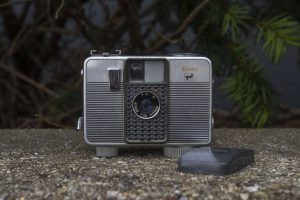
Although still linked to AGFA and it’s parent company GAF after the war, ANSCO would also partner with a variety of other German and Japanese companies like Bilora, Haking, Minolta, and Ricoh to produce ANSCO branded cameras. Confusingly, in 1967, the Memo name would be resurrected once again on a camera called the GAF Ansco Memo II, which was built for GAF by Ricoh, and shot half frame images on regular 35mm film.
Besides the name, the GAF ANSCO Memo II has nothing in common with either pre war Memo cameras. If you group them all together, you have the ANSCO Memo and AGFA Memo which both use Memo film, but are branded by two different companies, and then the GAF ANSCO Memo II branded with both companies names, but built entirely by an entirely unrelated Japanese company. I told you the Memo was puzzling!
Today, I don’t see a lot of demand for any of these Memo cameras. The AGFA version seems to be less common than the ANSCO one, but with an all metal body, is likely to survive a little better than the wooden body of the ANSCO Memo. Both cameras are interesting and worth collecting, not just for their confusing histories, but that in use, they actually are quite good cameras. The 18×24 “single frame” AGFA Memos are less common, but if you can find either in good condition, they have a curious design, and a simple enough operation that you should have no problem putting a roll of film through one.
My Thoughts
After my review of the ANSCO Memo last July, I set my sights at finding the AGFA Memo, the very different looking camera German branded, but made in the USA camera that used the same cassette to cassette film system. As was the case with the ANSCO camera, the film that both cameras were designed for hasn’t been made in over half a century, but as long as you have at least two empty cassettes, can be easily reloaded with regular 35mm, so shooting them shouldn’t be a challenge today.
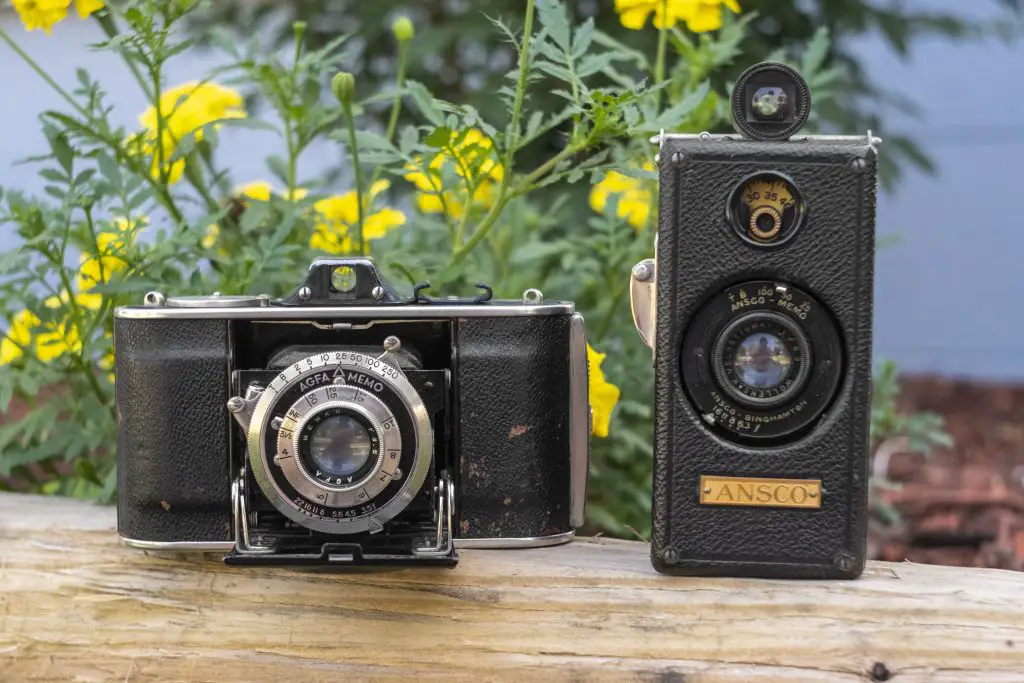
Upon it’s arrival, I was first struck with how heavy the AGFA Memo was. Compared to the mostly wood ANSCO version, the AGFA is entirely metal and is about 135 grams heavier. Despite the increased weight, the AGFA has a more traditional shape with a bottom hinged folding door that feels more comfortable in the hands. Covered in a soft leather, this example has seen better days as there were nicks and scratches all over the body, but otherwise was in tact and in what I would consider a good “user condition”.
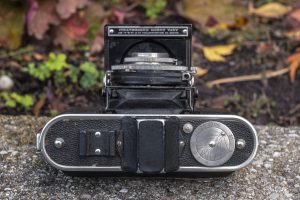
The top plate is pretty simple as it lacks most of the controls you’d find on a standard 35mm camera like advance or rewind knobs, exposure counter, or even a shutter release. All that is there are two upward facing strap lugs, an accessory clip which likely would have been used for some kind of external rangefinder or perhaps an extinction meter, the top of the viewfinder, a small front door release button, and an uncoupled depth of field scale.
The depth of field scale is actually kind of neat, and resembles those found on some Kodak cameras of the era such as the Kodak Vollenda. How it works is you turn the inner dial to line up the arrow with whatever distance you plan on focusing the lens to, and a series of lines point to the upper and lower limits of depth of field that would be in focus at that aperture. For example, in the image to the right, the scale is set to 7 feet, which if I set the lens to that same distance and chose f/11, everything from just under 5 feet to 15 feet would be in focus. At f/4.5, only that from 6 feet to about 9 feet would be in focus.
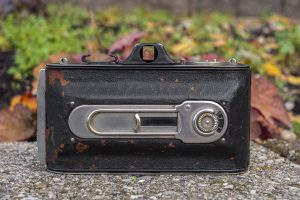
The back of the Memo is unusually busy as it contains the entire film transport mechanism which is one area where both the ANSCO and AGFA Memos are the same. Memo film is very similar to AGFA’s Karat and later Rapid films in which film is fed from one cassette to another by use of a “claw” that grabs the perforations on the 35mm film and pushes it from the supply to the take up side. To advance the film, you simply press the curved metal sider from one side to the other, and a spring loaded claw inside of the film compartment moves the film that amount. This can easily be done using your right thumb while holding the camera to your eye for a rapid succession of exposures.
The AGFA Memo was available in both double frame 24mm x 36mm versions and what was then called single frame 18mm x 24mm versions. This particular camera is the single frame version, which today would be called “half frame” but back then wasn’t a term that had been standardized yet.
In addition to the film advance slider, the exposure counter is also present on the back of the camera. The exposure counter is additive, showing how many exposures have been made up to 48. After loading in a new roll of film, the counter must be manually reset by pressing in on the knurled dial and twisting with your finger until the counter reaches 0.
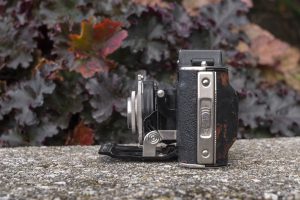
The camera’s left side is where you’ll find the release latch for the film compartment. From this side, you can also see how thick the camera’s back is to accommodate the Memo’s unique film transport system. While the camera is still pretty small when folded shut, it is a bit thicker than you’d expect from such a small camera.
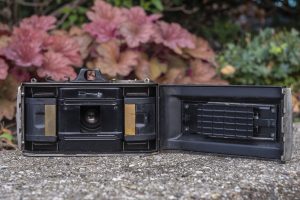
The right hinged door swings open to reveal the Memo’s film compartment. This being the single frame version, you can see the 18mm x 24mm opening in the film gate. Versions of the Memo that shoot 24mm x 36mm exposures simply have a larger opening here. For anyone whose seen a Karat or Rapid camera’s film compartment, it looks very similar in that two identical cassettes transport film from left to right.
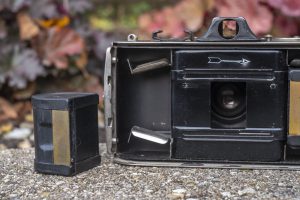
Memo cassettes are entirely hollow without any spools inside for the film to attach. When loaded with film, it just wraps around itself inside the cassette. Each cassette is made entirely of metal and has a felt light trap where the film enters or exits each cassette. Although Memo cassettes were once sold pre-loaded with film, they are easy to reload with regular 35mm film as you merely need to feed in a strip of film into the cassette in either a dark room or film changing bag. I explain how to do this with images in my review for the Pentacon Penti II, so if you want to try this yourself, check out the instructions there. Although the instructions are for Rapid cassettes, the process is exactly the same as with Memo cassettes. The cassettes are held in place by two metal clamps simply by pressing them into place.

The film pressure plate has a raised rectangular pattern which I assume was done to help reduce friction while film transports across it. Behind it, you can see two long springs and two small claws above and below the pressure plate which are both connected to the slider on the back door. When advancing the film, these claws push the film into the take up cassette using perforations on the film. When advancing the film, the pressure plate does not move.
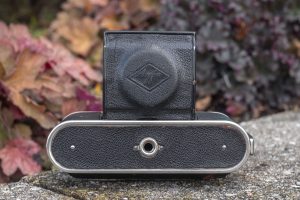
The only thing appearing on the camera’s bottom is the 1/4″ tripod socket which is unusual for most AGFA branded cameras as those made in Germany from this era would have had the larger European 3/8″ tripod socket. From this angle, with the front of the camera open, you can also see the AGFA logo embossed into the leather on the front door.
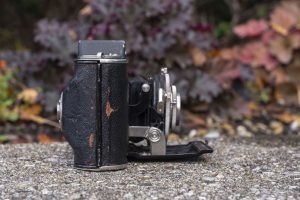
Looking at the camera’s right side, you can see the location of the AFGA leaf shutter’s release lever. On the hinges of each of the folding struts are two round circles which are pressure points which when squeezed together, allows you to fold the camera shut.
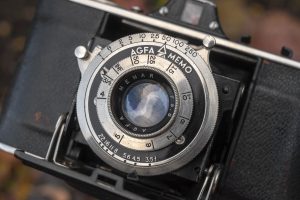
The camera’s shutter is an AGFA design, but closely resembles that of a Compur rim set shutter in which a nickel plated ring around the circumference selects shutter speeds from 1/2 to 1/250 plus T and B. The shutter release and cocking lever are located near the 9 o’clock and 1 o’clock positions. The aperture is controlled using a small pin near the bottom of the shutter. The location of this lever is a bit inconvenient as it’s close location to the door makes it difficult to change, especially with fat fingers. Finally, focus is changed by rotating the front lens element. The AGFA Memo, being built and sold in the United States has the focus scale in feet, rather than meters like a German built AGFA would have.
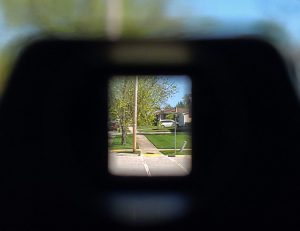
The viewfinder is a simple two element glass window approximating the 18mm x 24mm frame. Despite this camera showing significant signs of use, the viewfinder was very bright and clear. Had this been the double frame version of the Memo, this window would be twice as wide. Although the viewfinder in the AGFA Memo is quite a bit smaller than the one on the ANSCO Memo, it is still sufficiently large enough to easily frame an image, even while wearing prescription glasses.
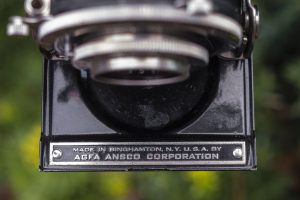
The AGFA Memo is a strange camera in that it both has the AGFA branding and cosmetics of a German built camera, but the plaque on the inside lip of the front door clearly shows it’s American made heritage.
With the exception of the tightly located aperture lever, all of the camera’s controls are in logical locations. When holding the camera to your eye, the shutter release falls in a very comfortable location for your right index finger. Although it doesn’t use Kodak’s 35mm film which was already available when this camera was released, Memo film is easy to load, advance, and unload. Also, unlike other extinct film formats, is easy to reload today with bulk 35mm film.
I was quite excited to get a chance to shoot this German/American hybrid camera and it wouldn’t take long after acquiring it before I loaded in some film and took it out shooting.
My Results
Although the Memo’s shutter seemed to fire at all speeds, I’ve learned from experience that when testing a camera for the first time, to not rely on the shutter’s fastest or slowest speeds, so my target film for the camera would be something in the 50-100 speed range. My first opportunity to shoot the Memo came during a brief warm up during the winter of 2021 when I was hoping to get some color film in. My only slow color film is Kodak Vision3 50D so I loaded in a short clipping of that into the Memo’s cassettes and took it out.
Kodak Vision 50D seems to over saturate yellow and magenta, often giving images a somewhat “altered” look to them which is very evident here. But beyond the colors, I was incredibly impressed with what the Memo’s modest Memar lens was able to do with good lighting. When scanning in the photos, I loved the framing of the curved images so I left them in the final scans as I think they accentuate the look a little better.
Impressed more than I thought I would be, I knew I had to see what this camera could do with another roll of film. It would take me a few months before I had a chance to load in some Rollei RPX25, which although expired by about 15 years, still shoots at box speed with absolutely no signs of aging.
Like with the color images, the Memo handled the 25 speed Rollei film masterfully! A slight amount of softness is evident in the images, lowering the contrast in a way that doesn’t at all detract from the look you’d expect from a camera that’s over 80 years old. The uncoated Memar lens was likely designed for slower black and white films like this, so these images are probably very characteristic of what the original owner might have gotten from them when the camera was new.
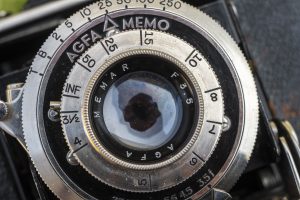
In most of these images where I had stopped the lens down to about f/8 or smaller, sharpness is good from corner to corner with no visible vignetting, but wide open there is some very noticeable softness near the corners. Considering this is the same exact lens that AGFA used on the 24×36 “double frame” models. what you’re seeing here is a crop of a full frame image, suggesting the lens is covering far more than the 18×24 images this model makes.
Overall, nearly every image I got from the Memo turned out great with the only exception being a recurring problem I had with framing where my intended subject was consistently to the right. It’s not parallax as it happened even on some shots where I was focused to infinity, so I guess I’ll just chalk it up to user error.
I really enjoyed shooting the Memo. The film advance slider on the back is very cool and makes a neat ratcheting sound as you advance each frame, unlike that on regular lever or knob wind cameras. I commented on this very same feature on the ANSCO Memo which to be honest, is the only feature shared between the two cameras that works the same way.
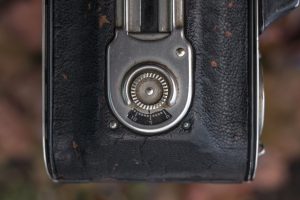
Like nearly every 1930s folding camera, the film advance is not coupled to the shutter, so you need to remember to manually cock the shutter before firing it, but that’s not at all a big deal. The more compact metal body makes the AGFA Memo the more portable of the two Memos, but I definitely appreciated the larger viewfinder on the earlier ANSCO, and I also didn’t miss framing as much as I did on this one.
I definitely am a fan of the AGFA Memo. Like other cassette to cassette based 35mm alternative formats, you might not be able to buy the film new any more, but with two empty cassettes, reloading your own film is super easy and should not dissuade anyone wanting to give a camera like this a try. Although built in the United States, this camera has that familiar nickel and leather feel of a German camera, it’s got a very capable lens with a wide enough number of shutter speeds to handle most films today, the film advance is cool, and the images you’ll get from them are like looking back through time. I highly recommend the AGFA Memo for collectors and users alike!
Related Posts You Might Enjoy
External Links
http://camera-wiki.org/wiki/Agfa_Memo
http://www.collection-appareils.fr/x/html/page_standard.php?id_appareil=770

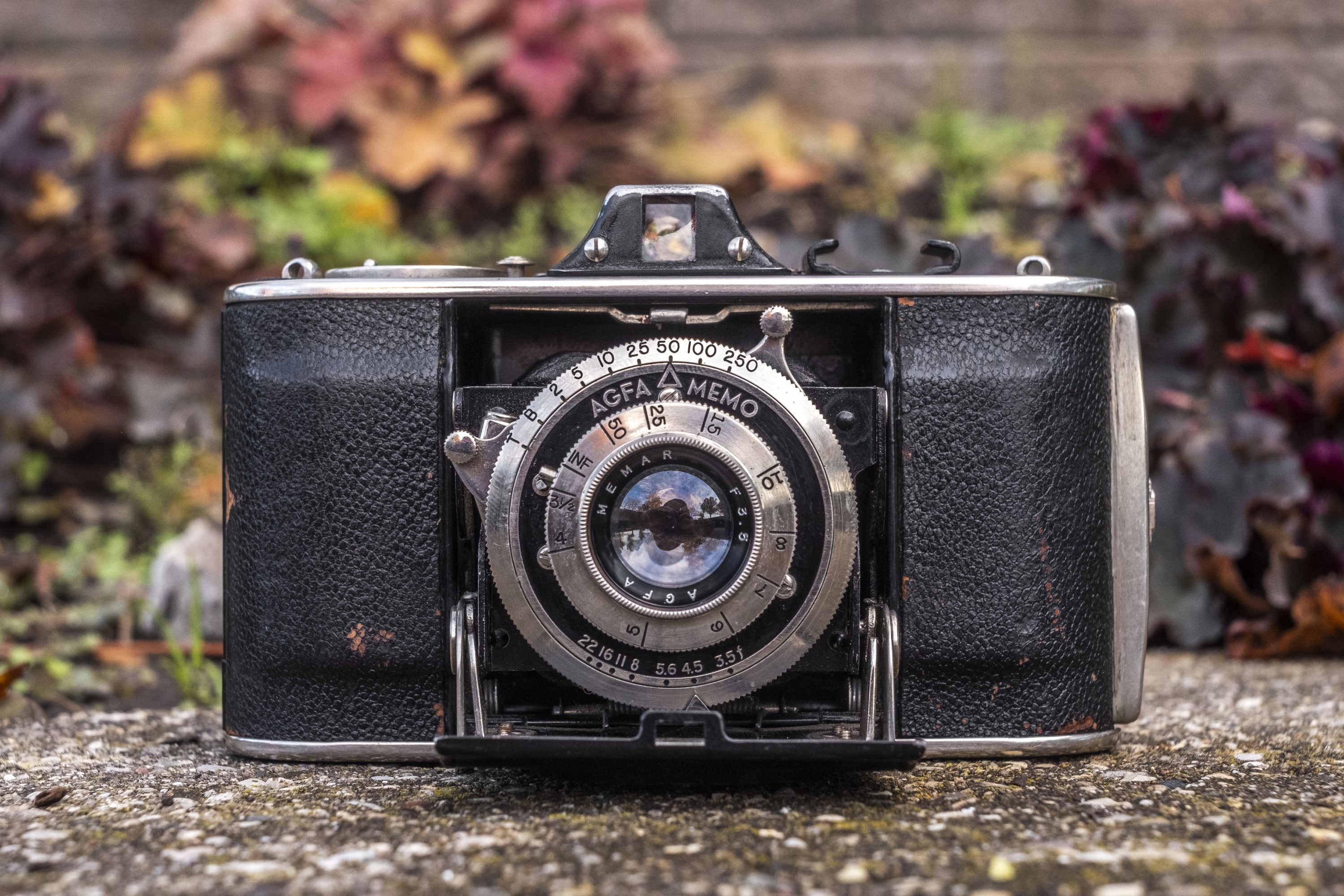
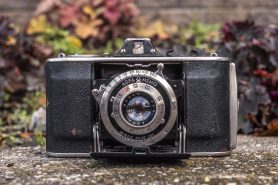
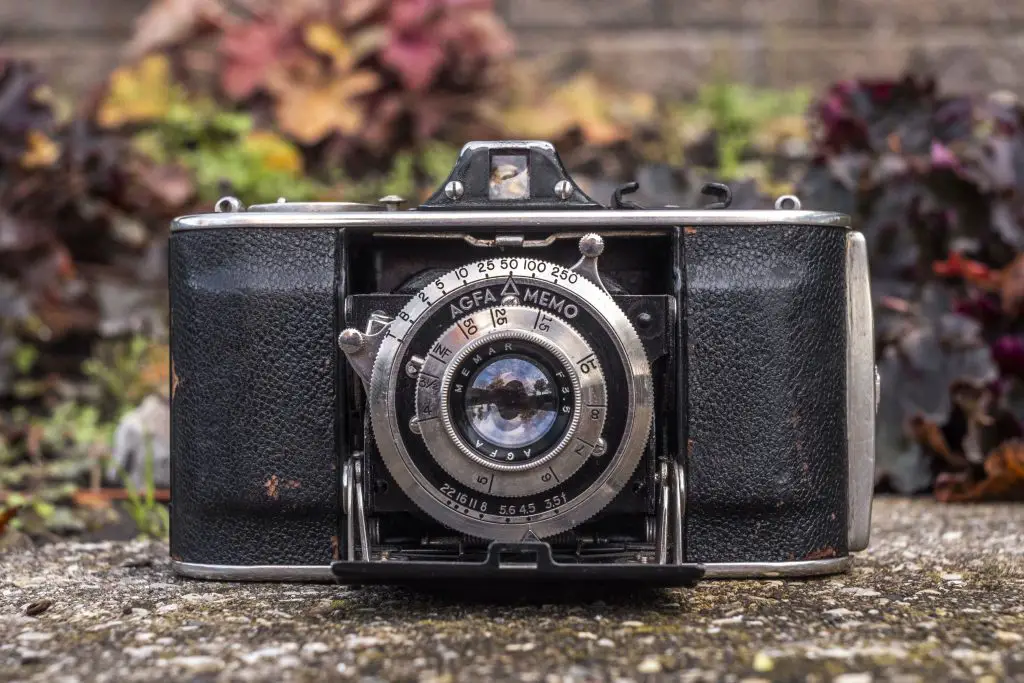
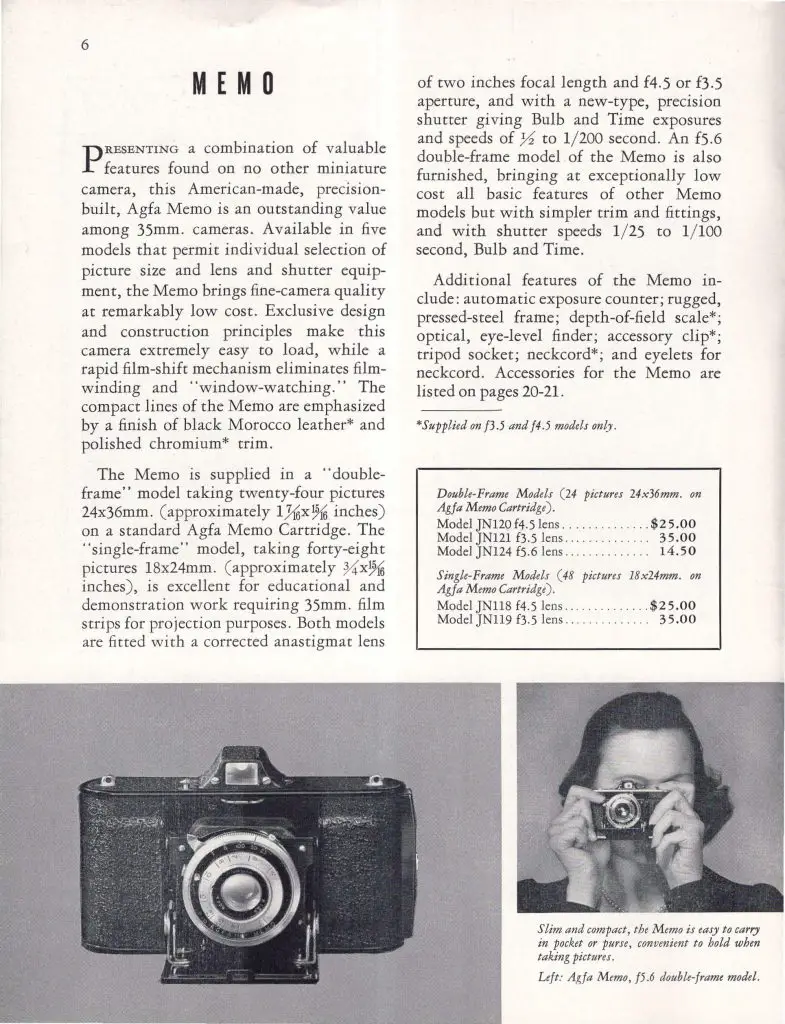
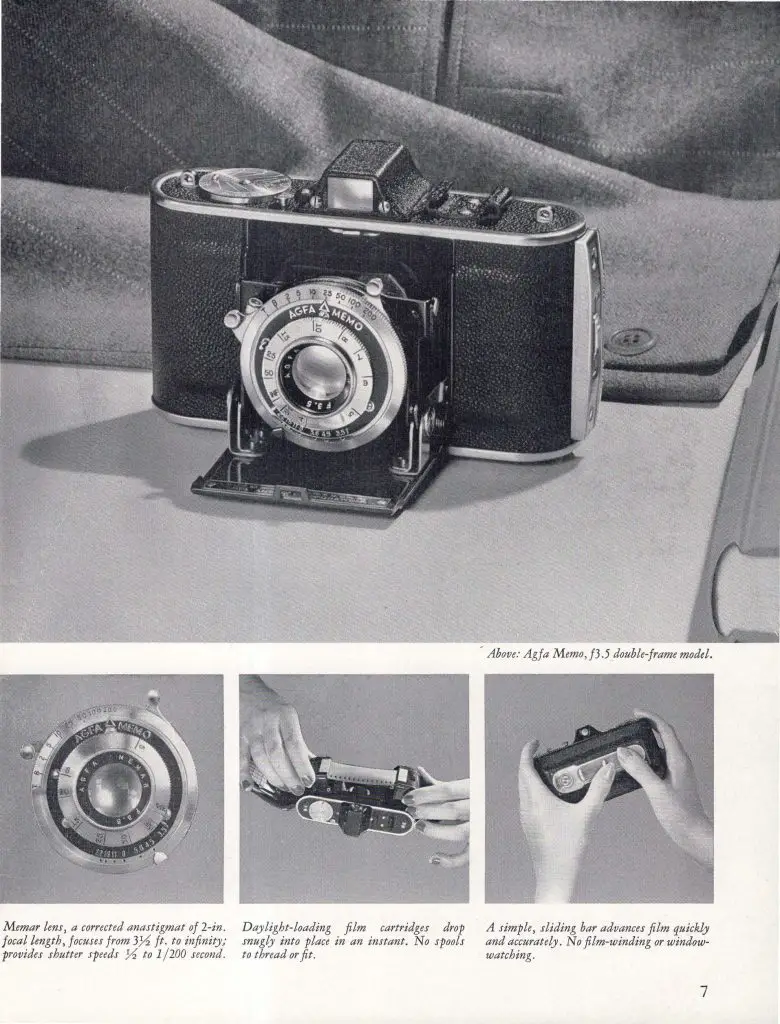
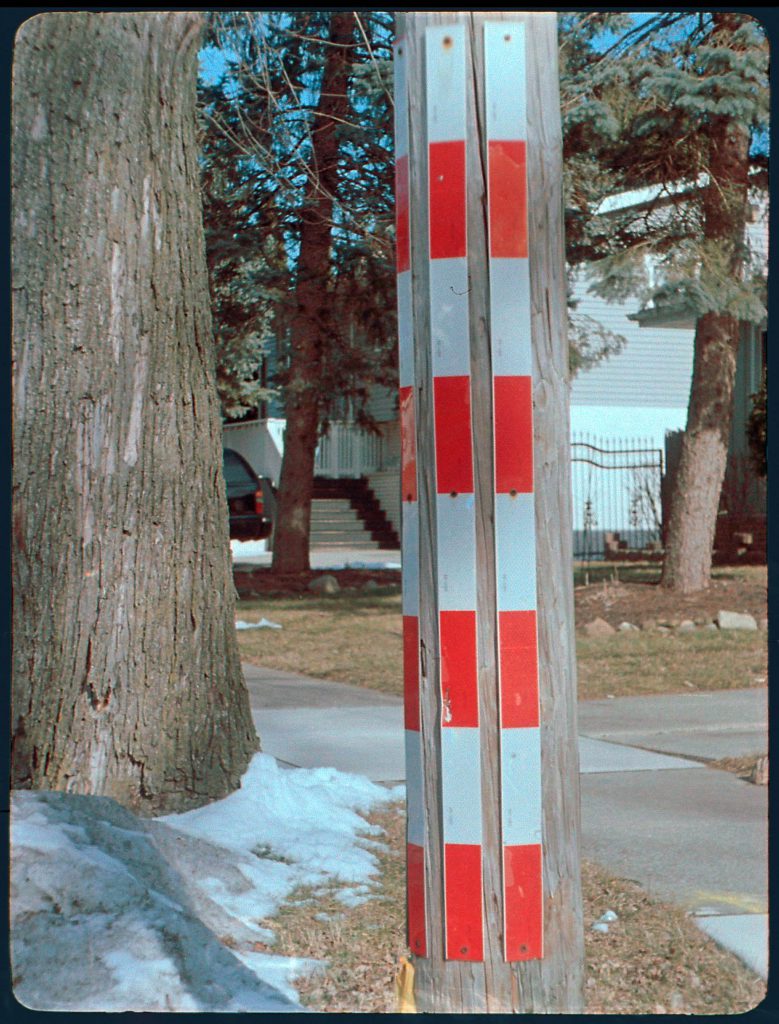
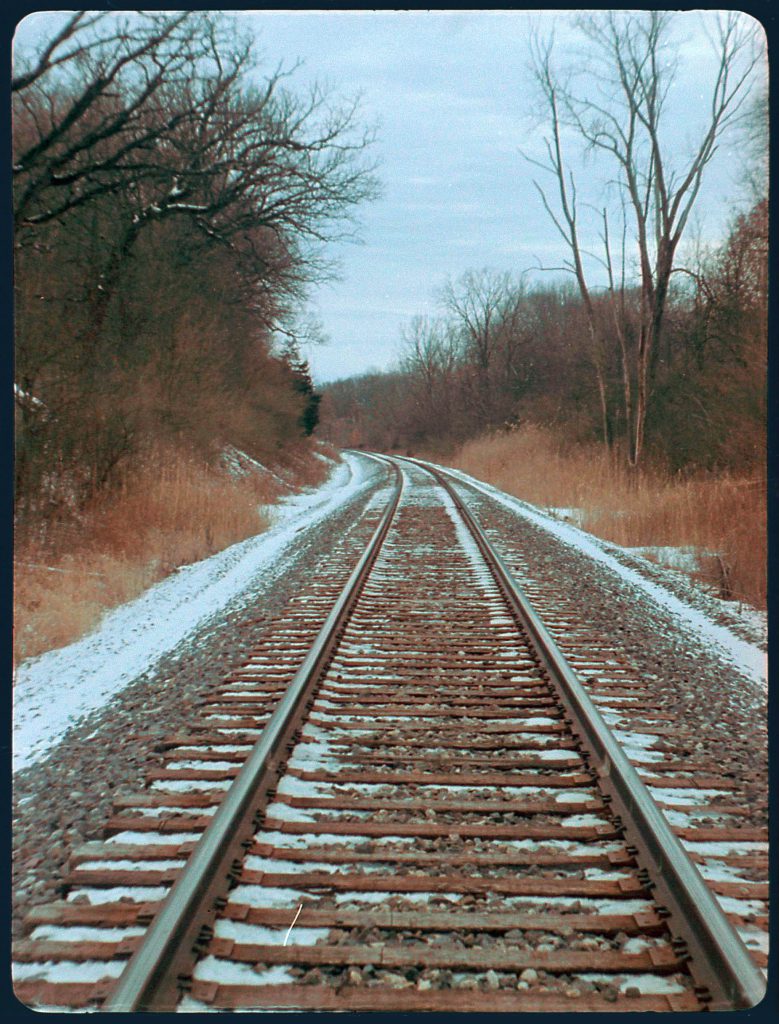
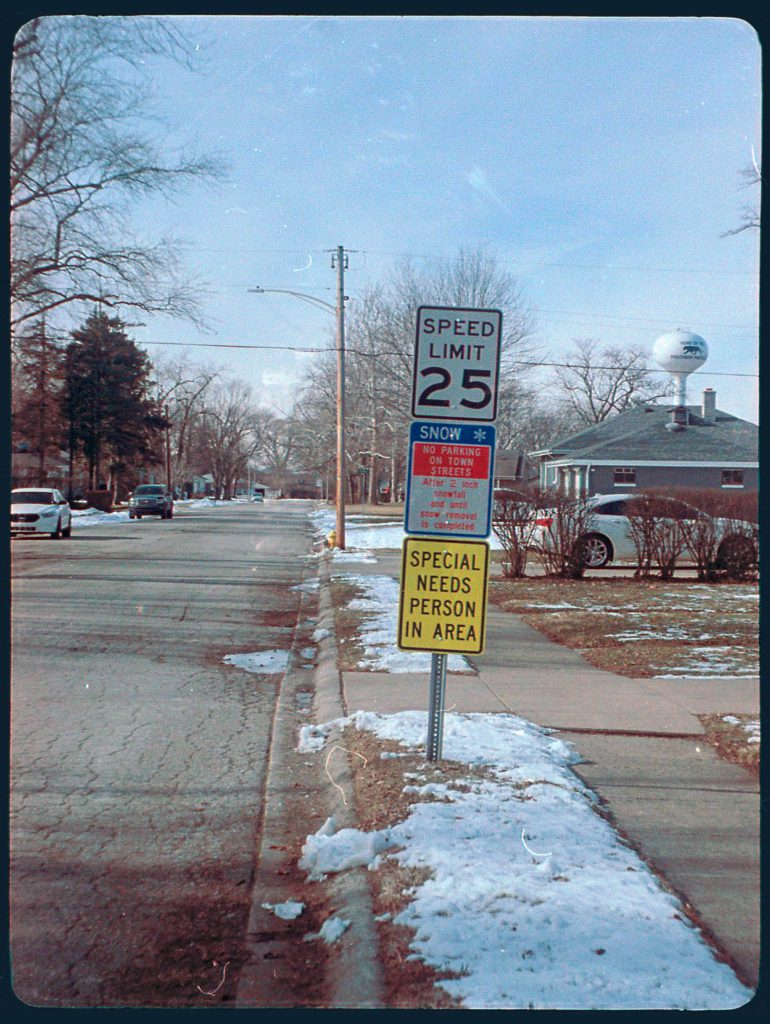
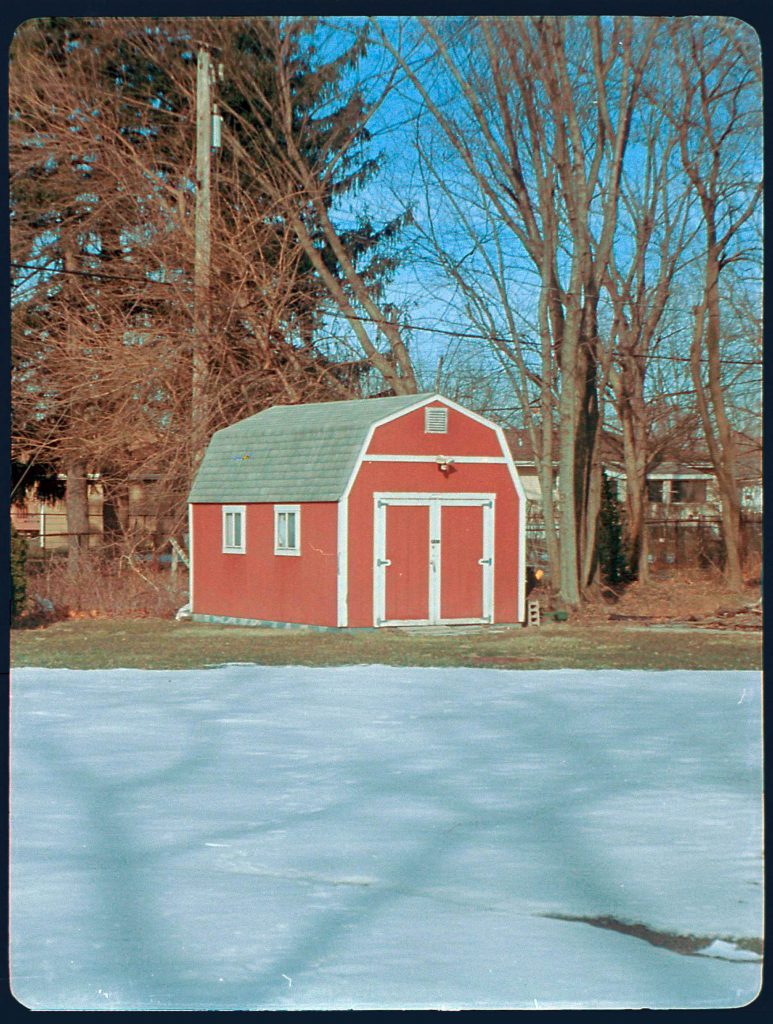
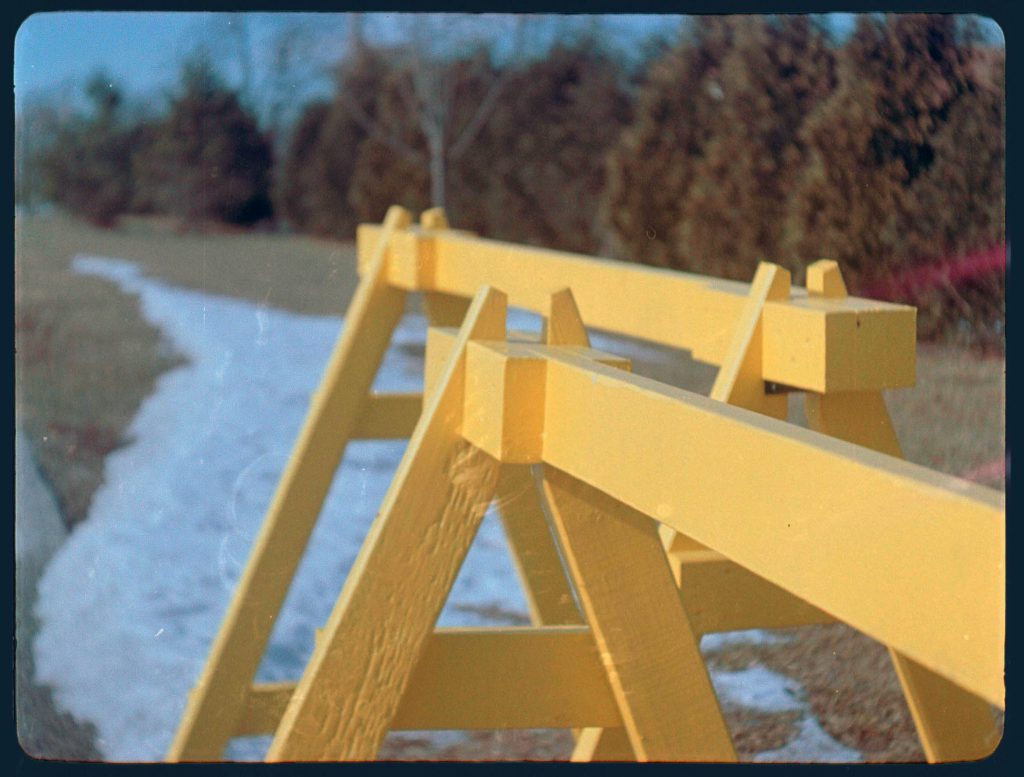
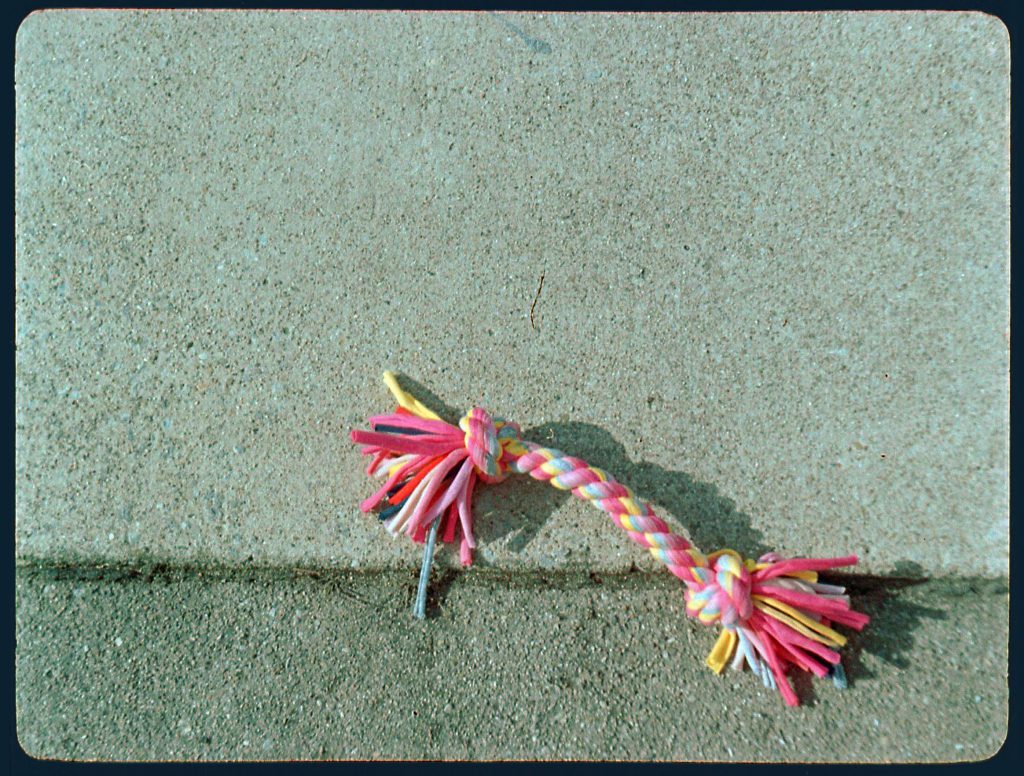
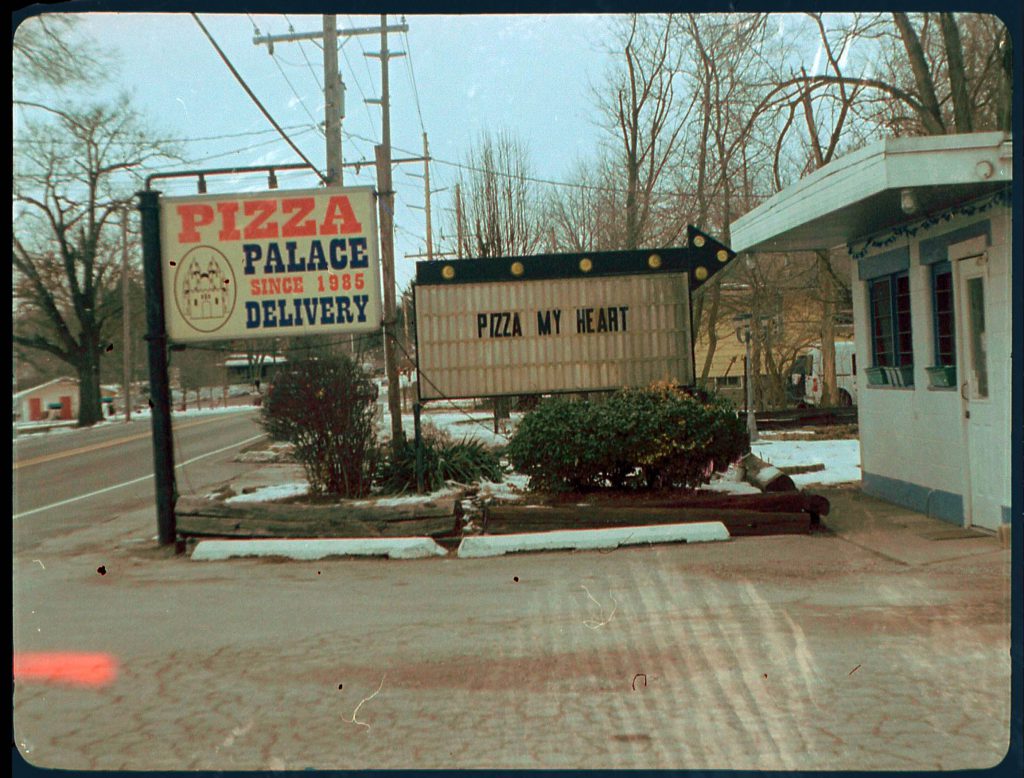
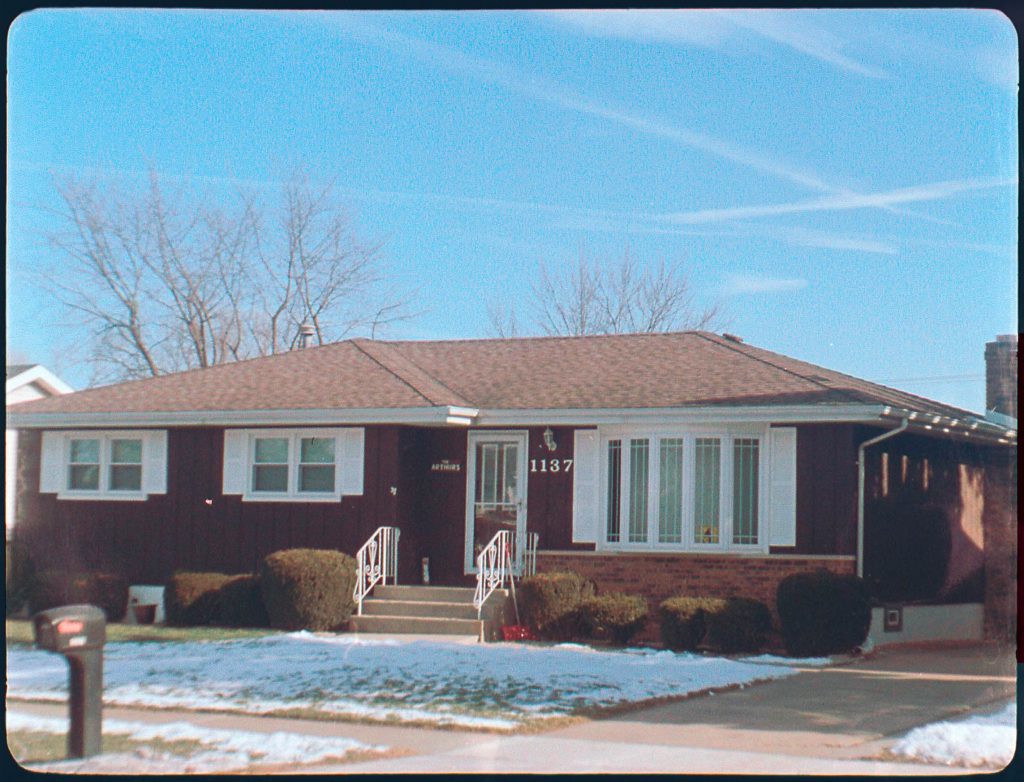
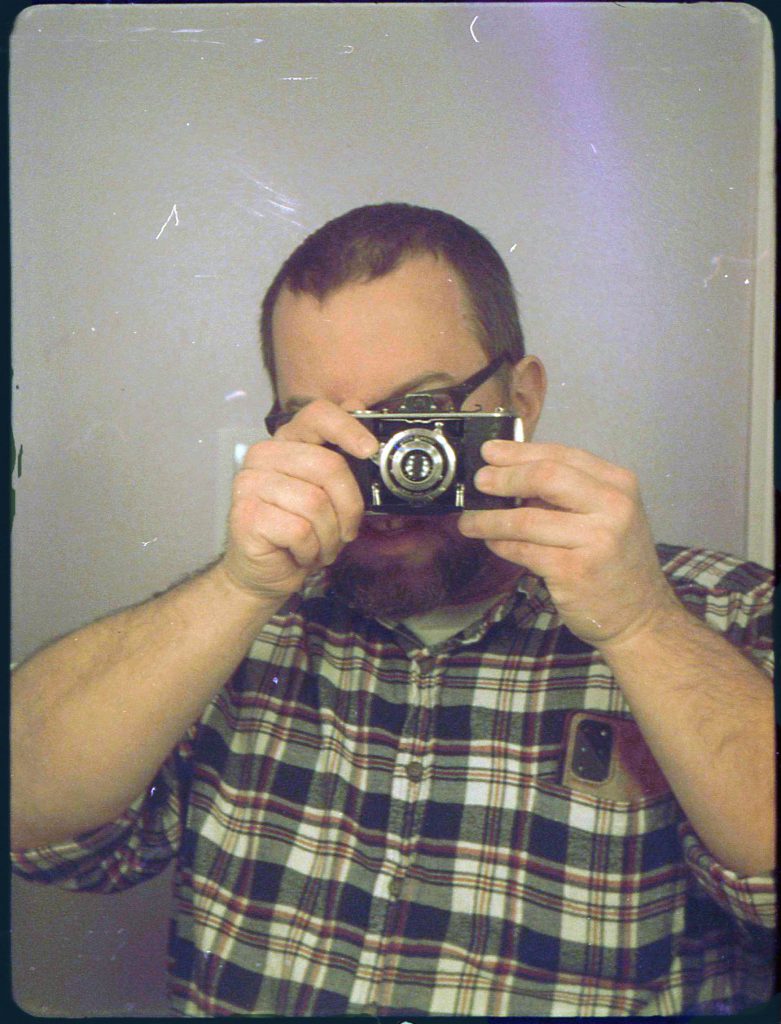
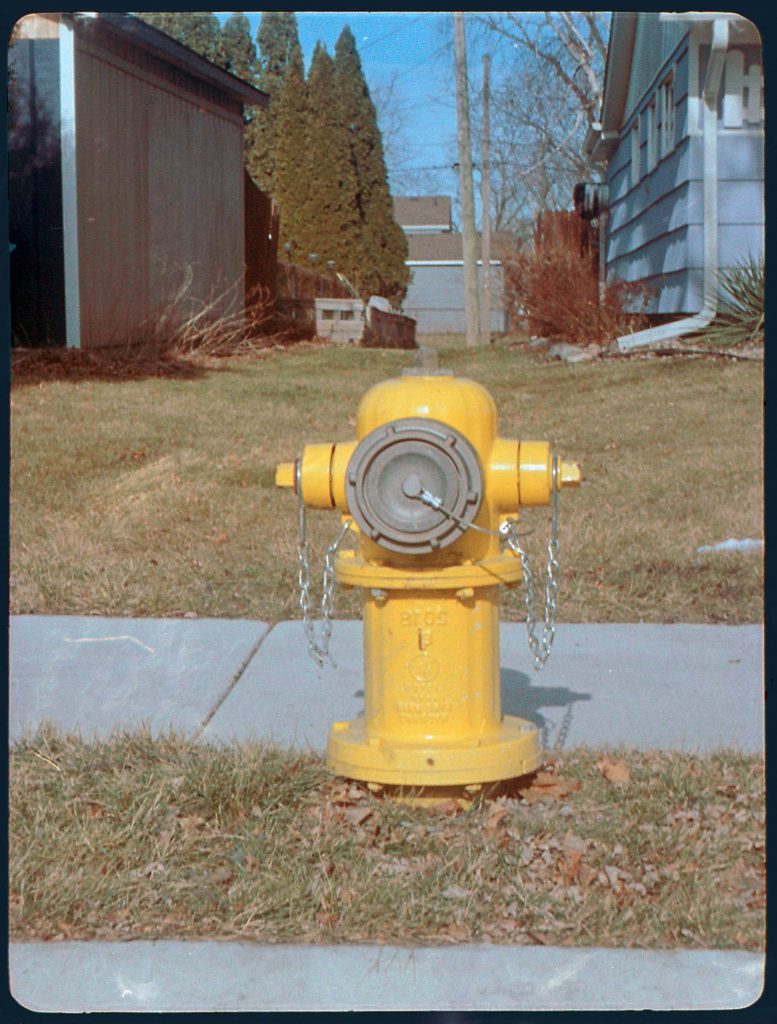
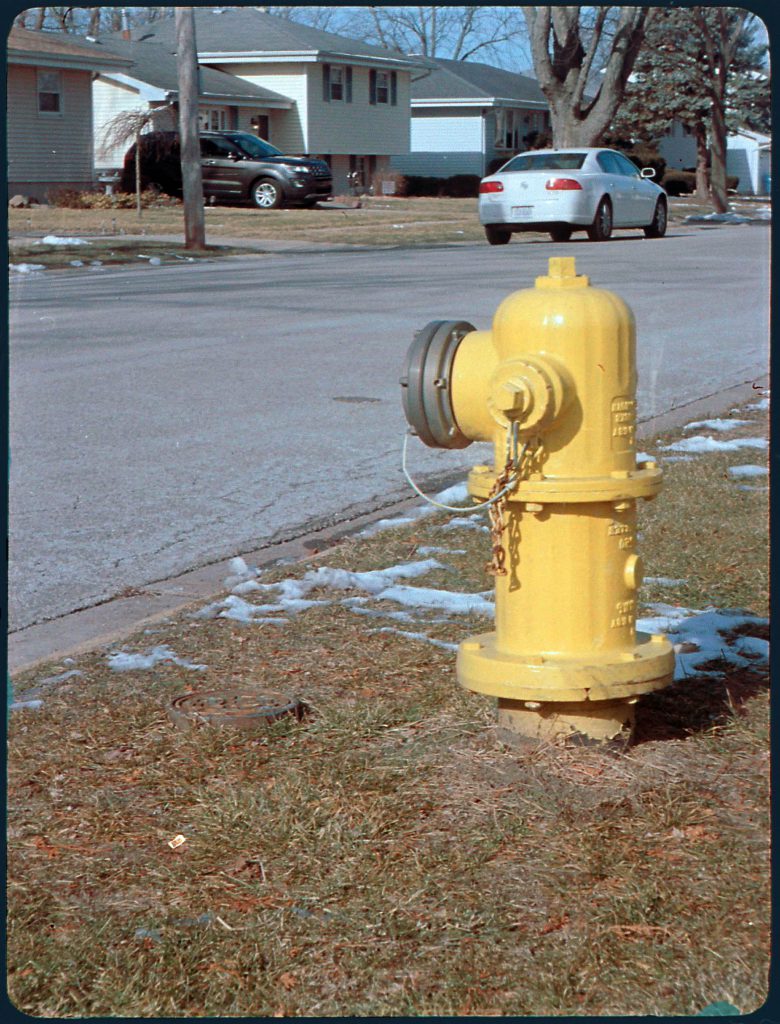
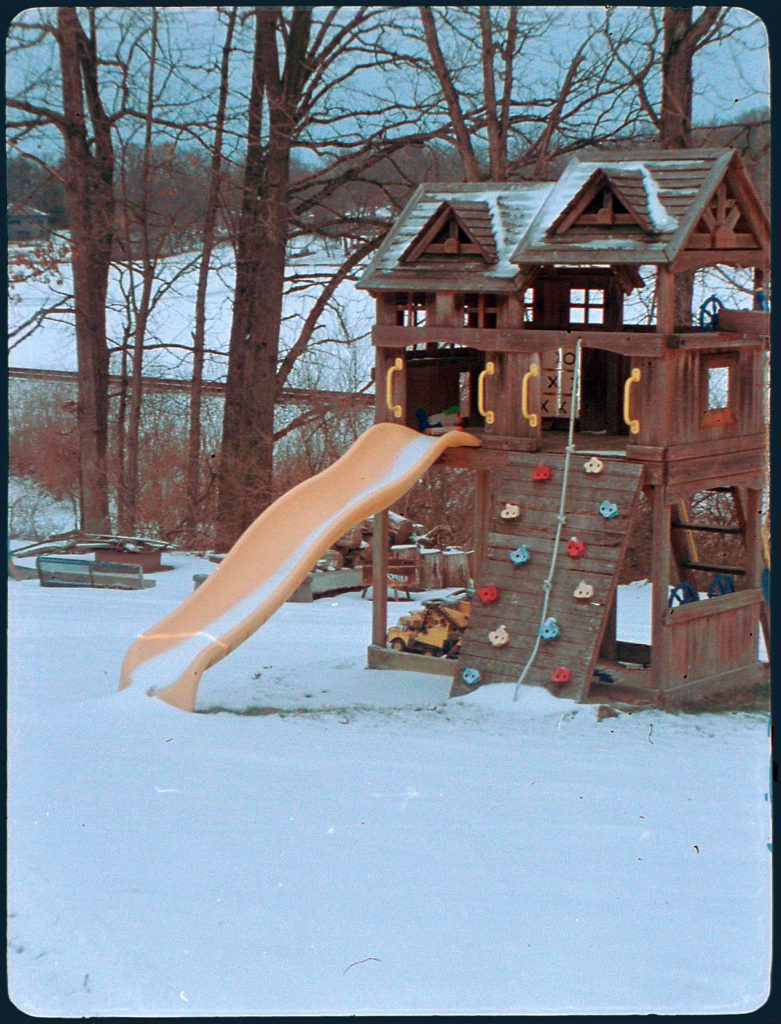
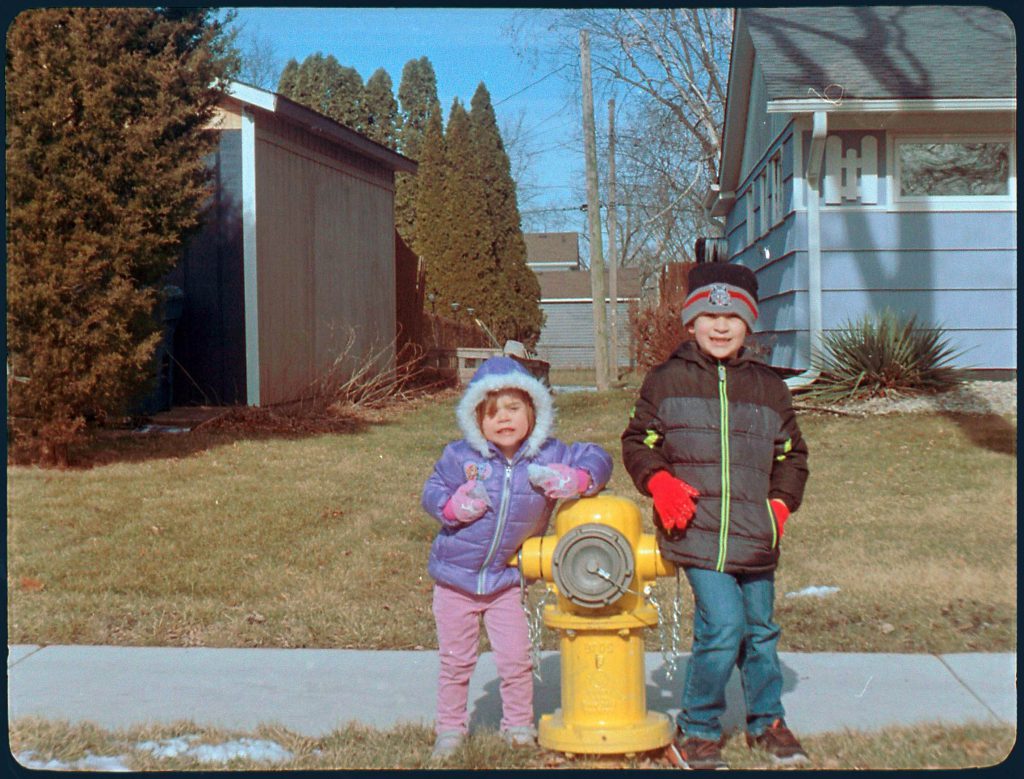
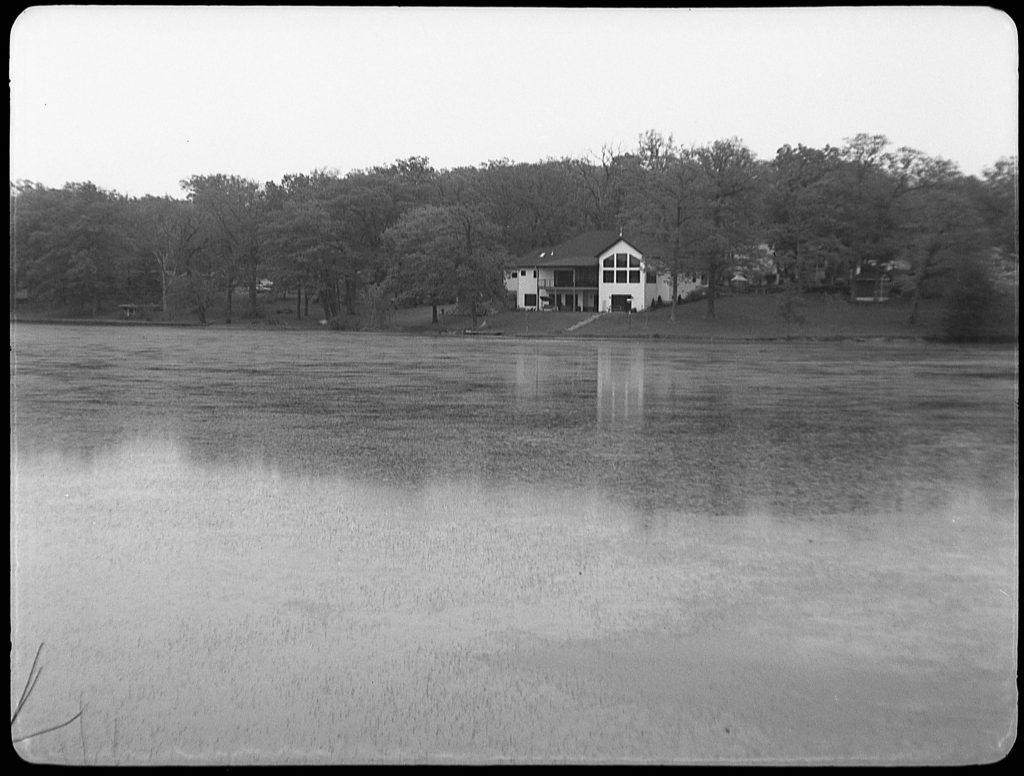
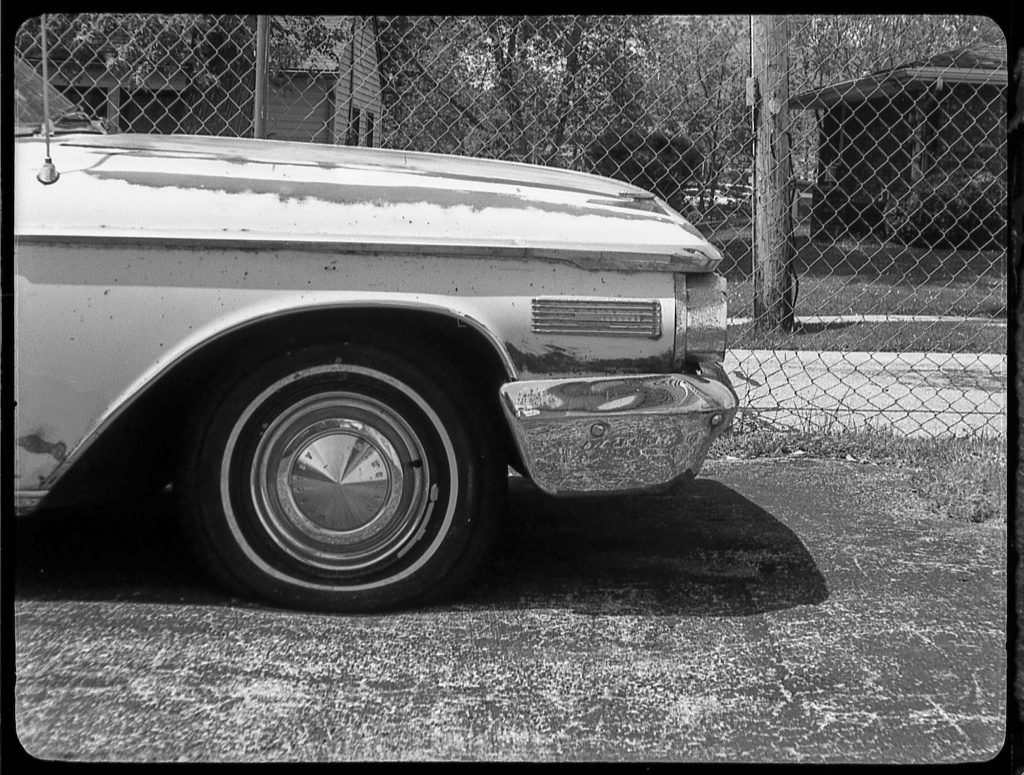
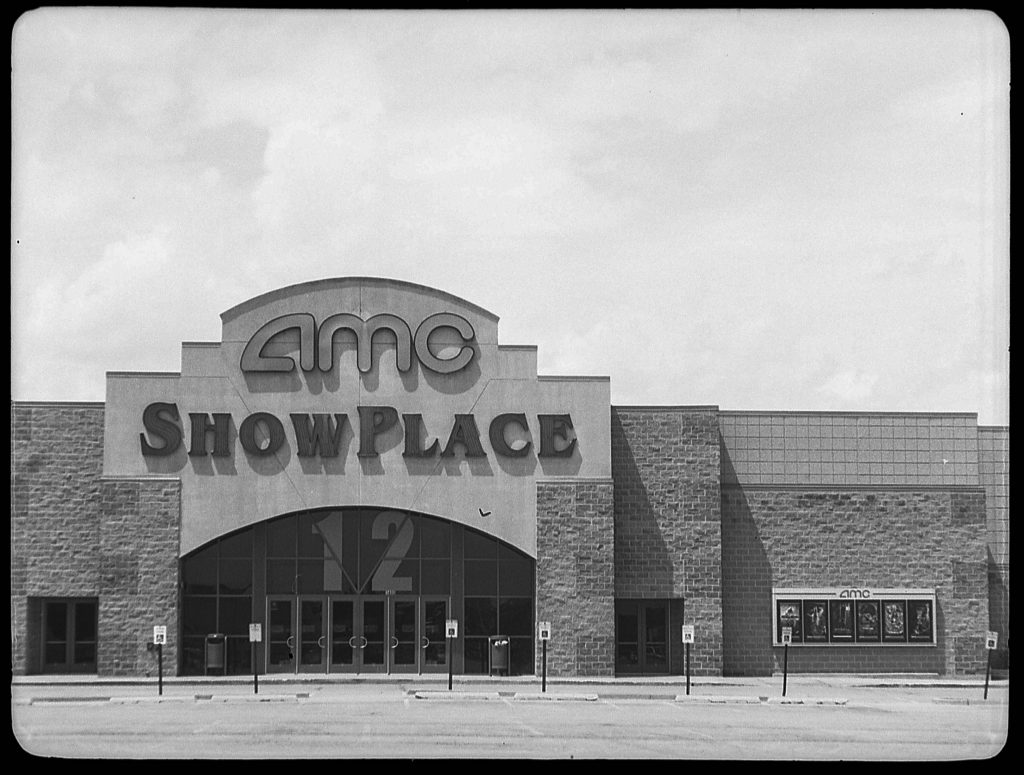
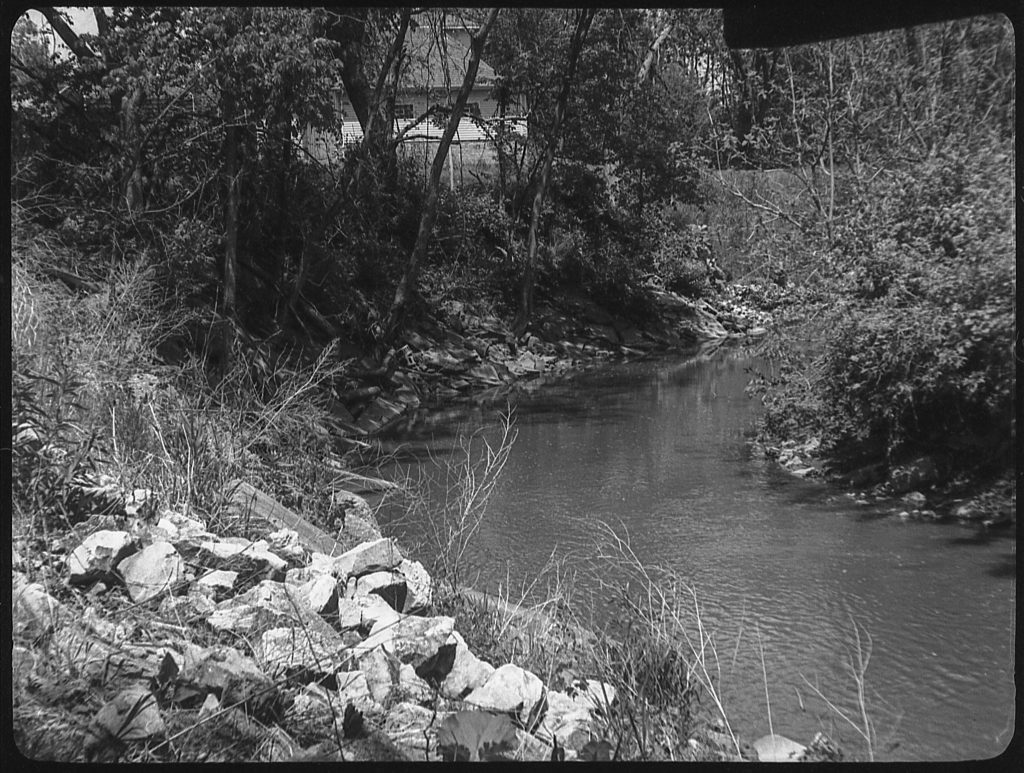
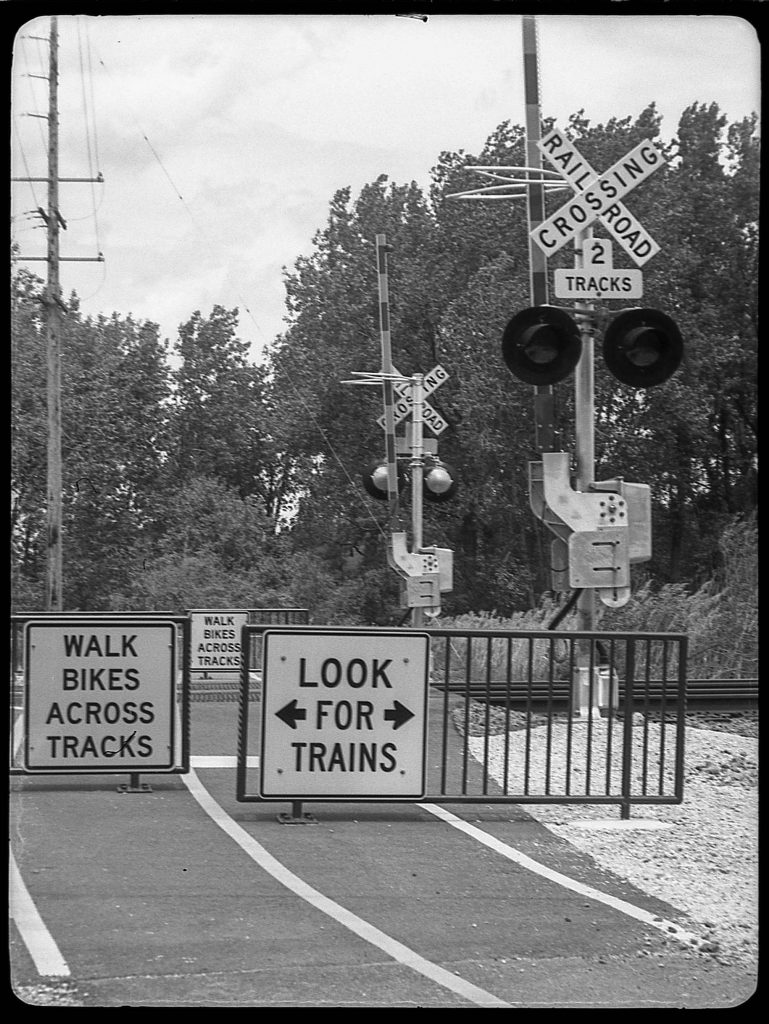
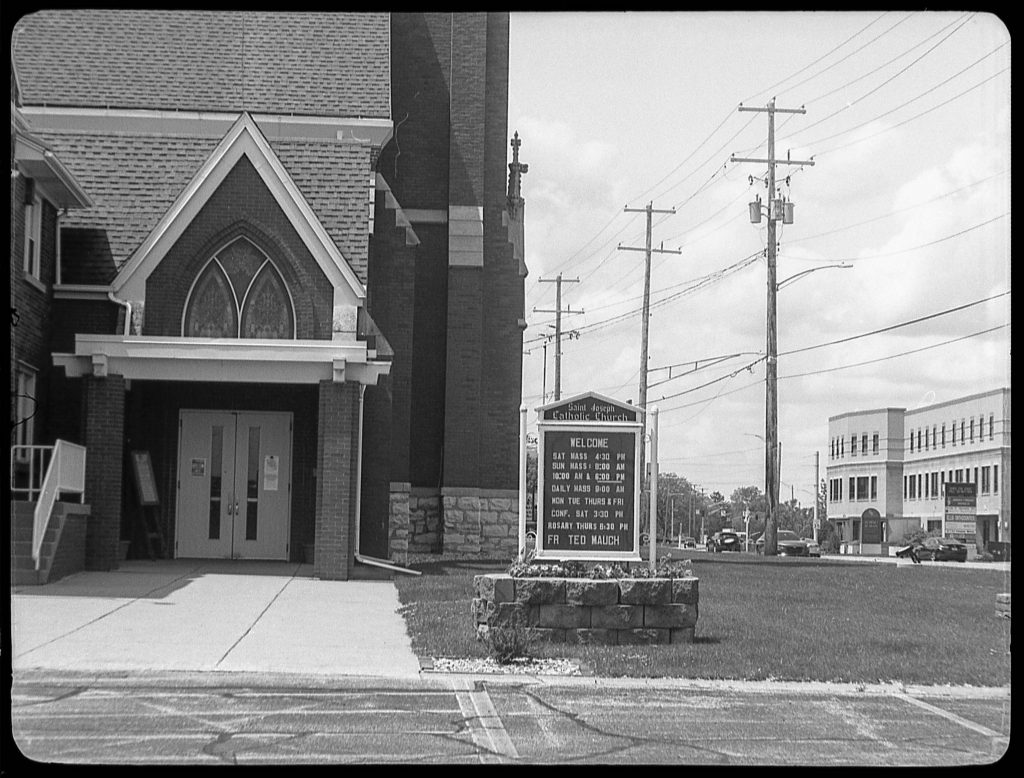
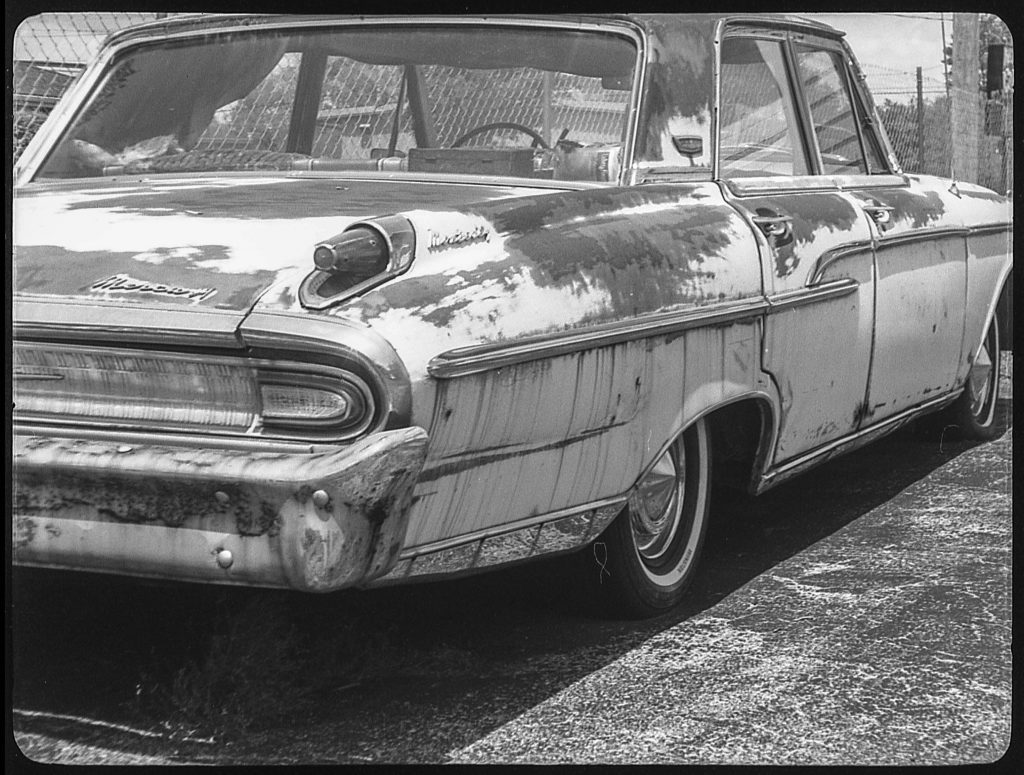
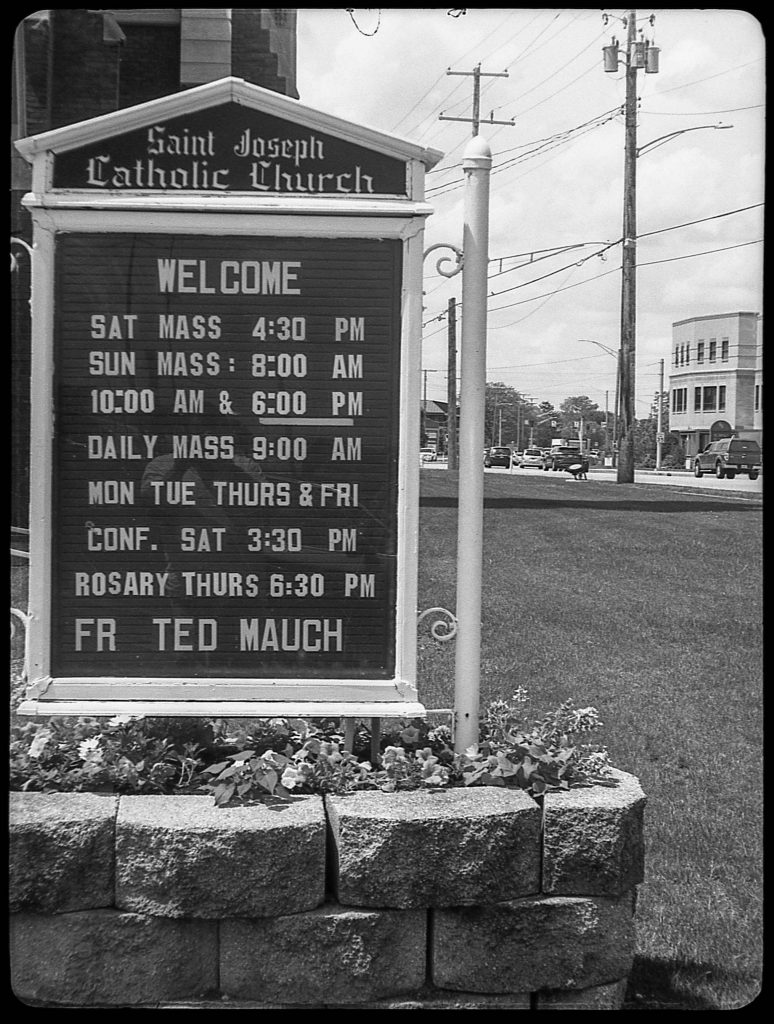
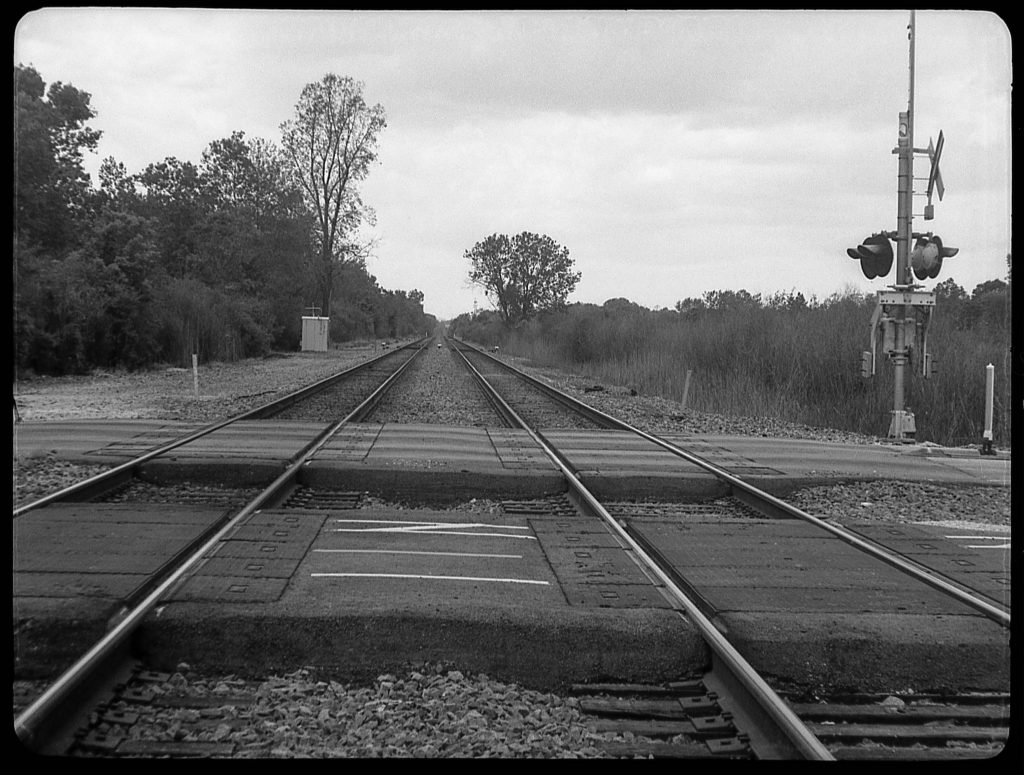
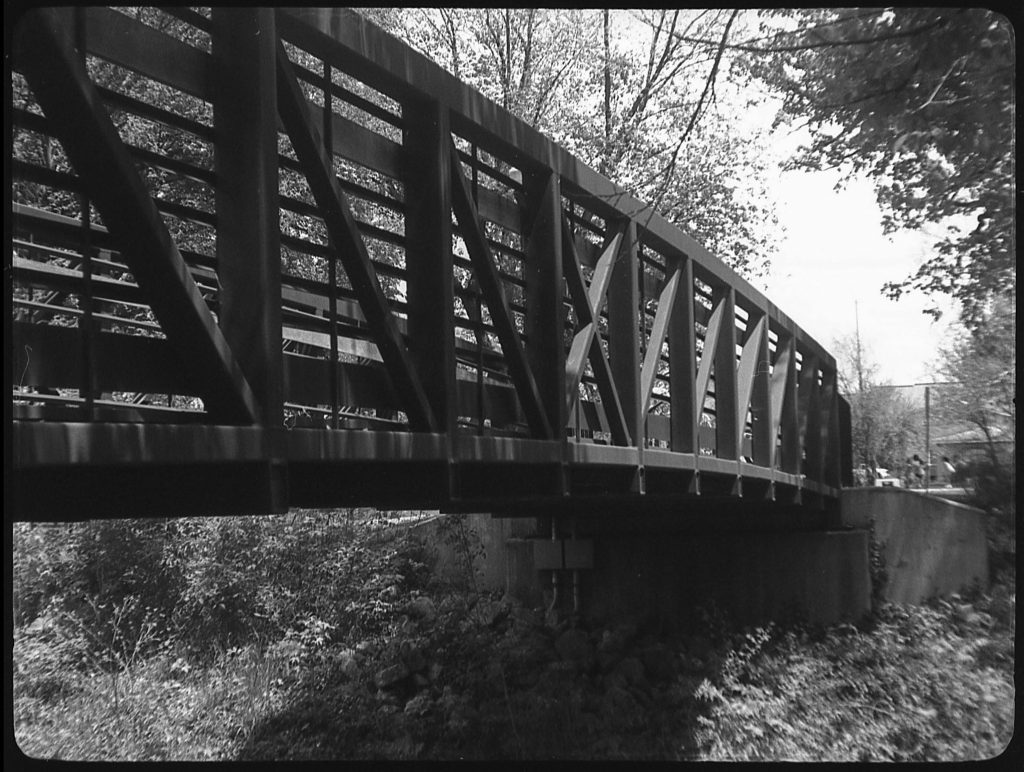
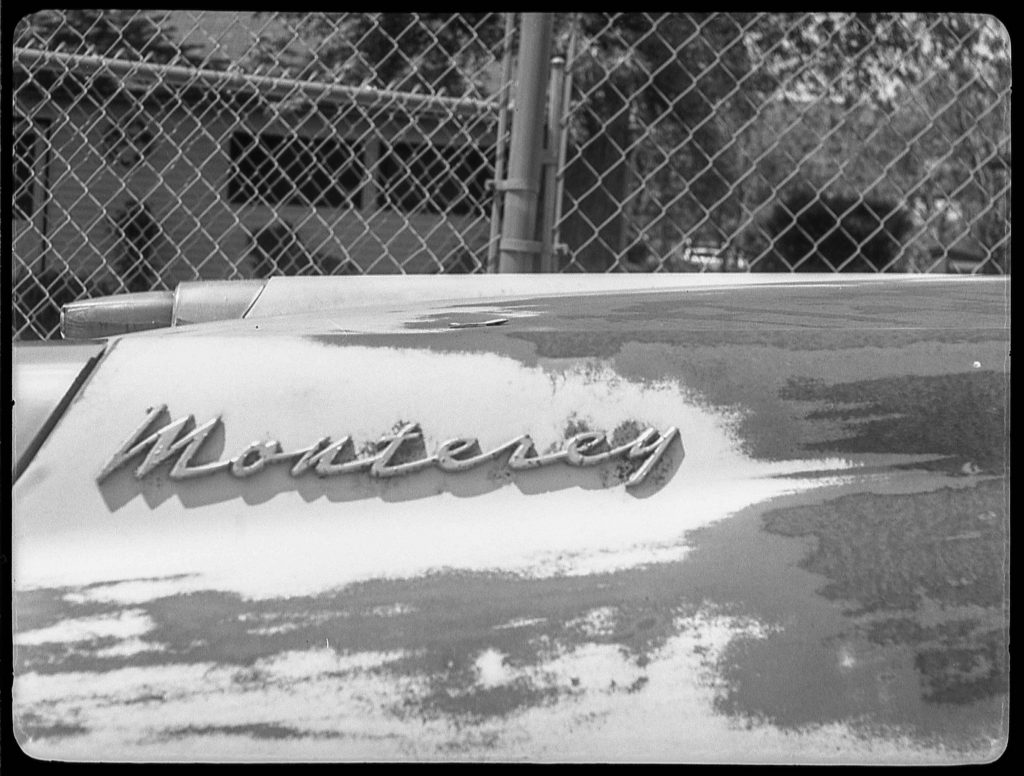
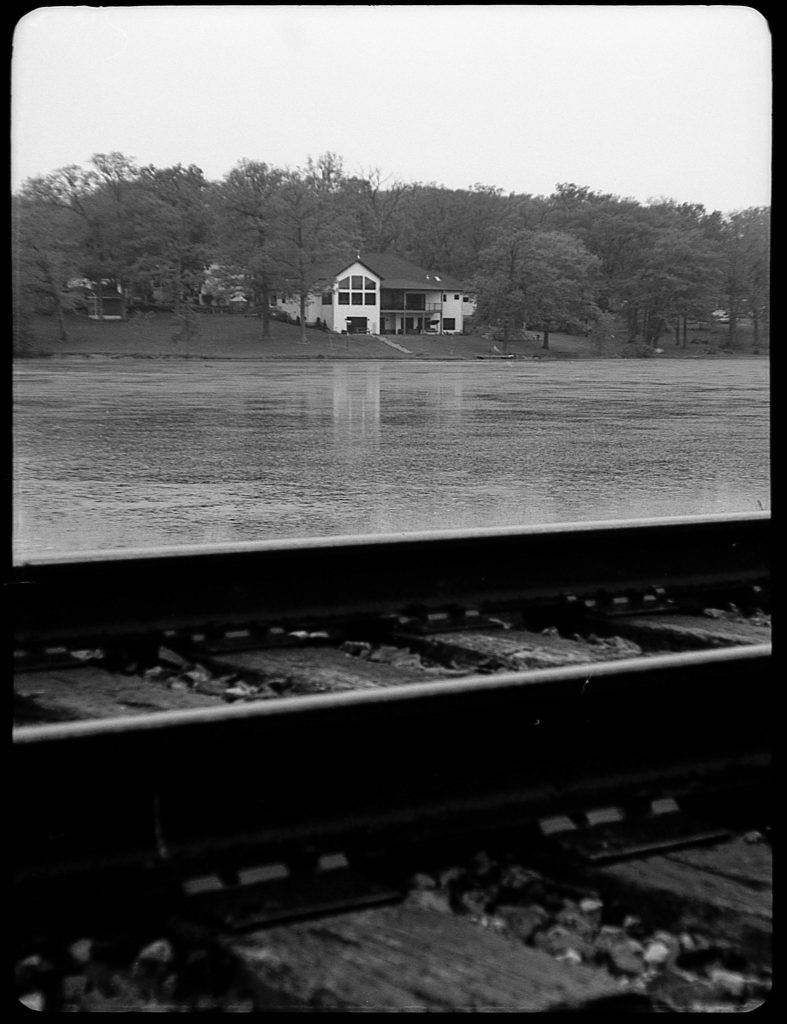

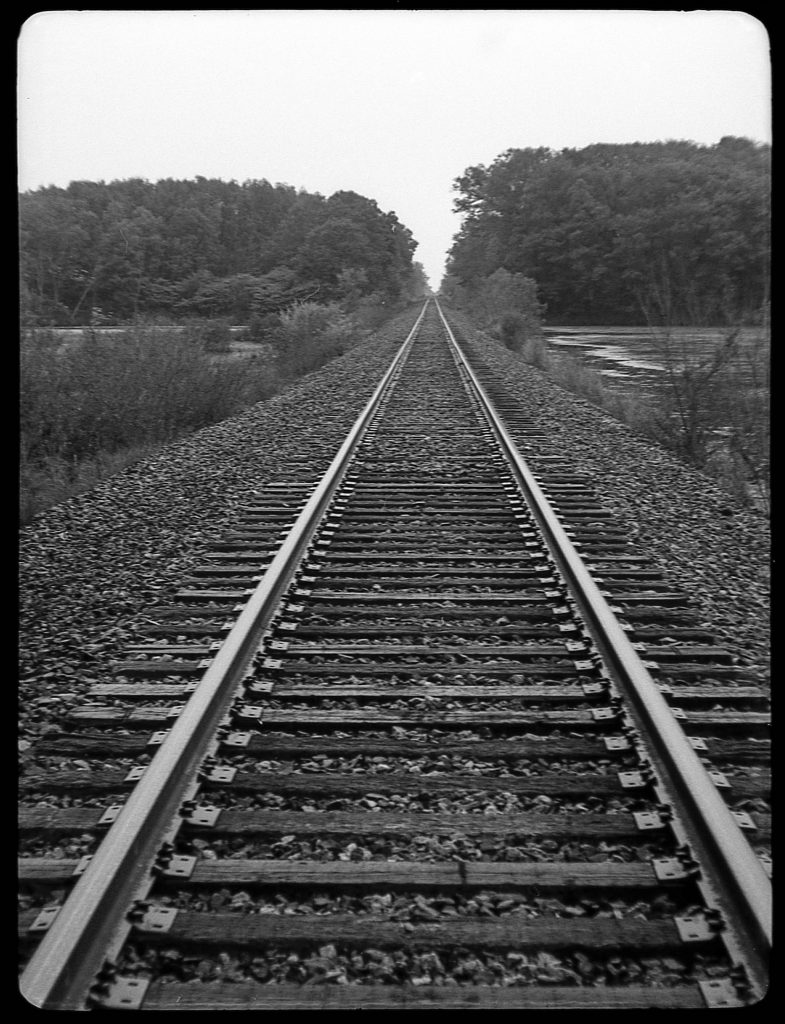
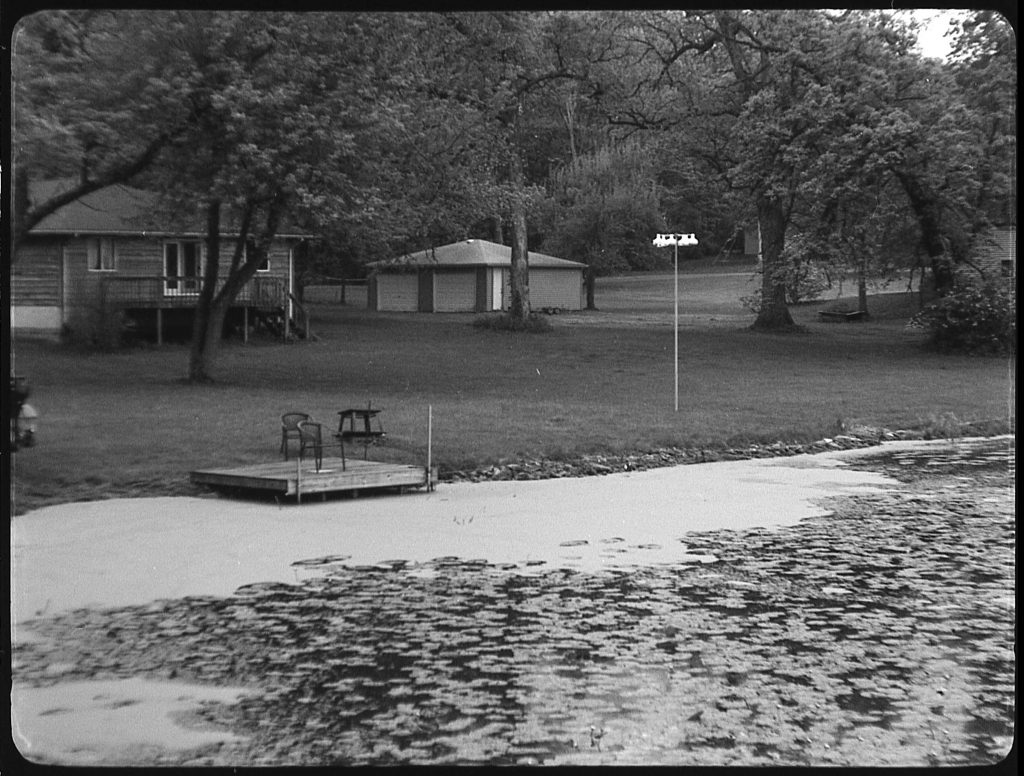
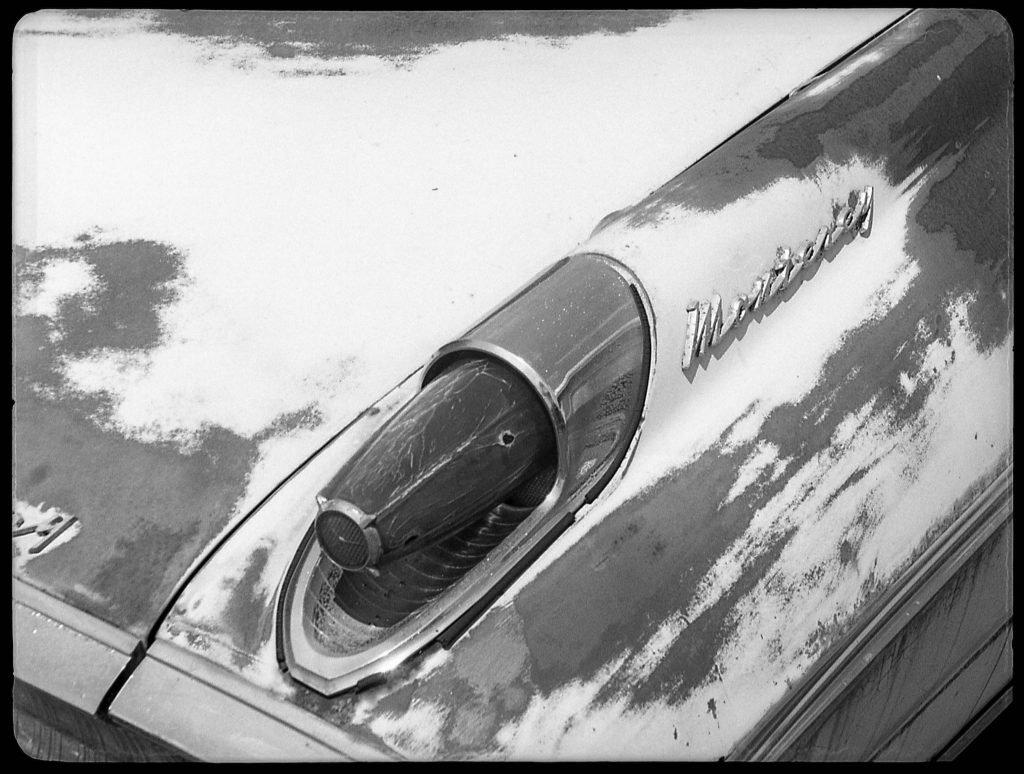
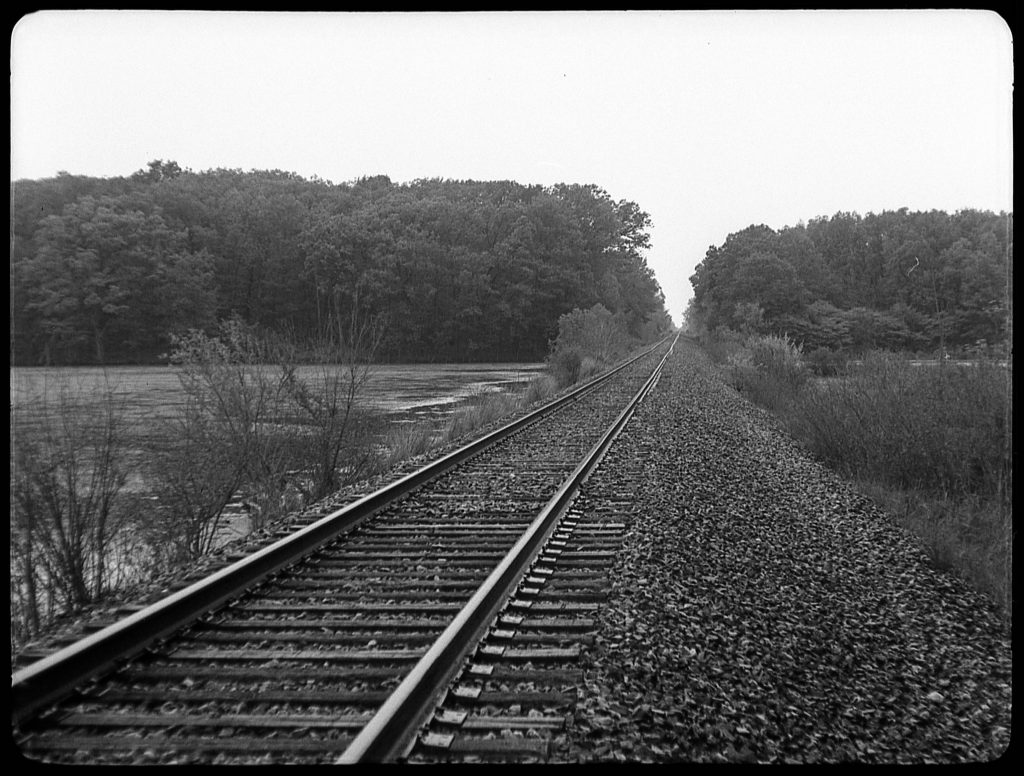
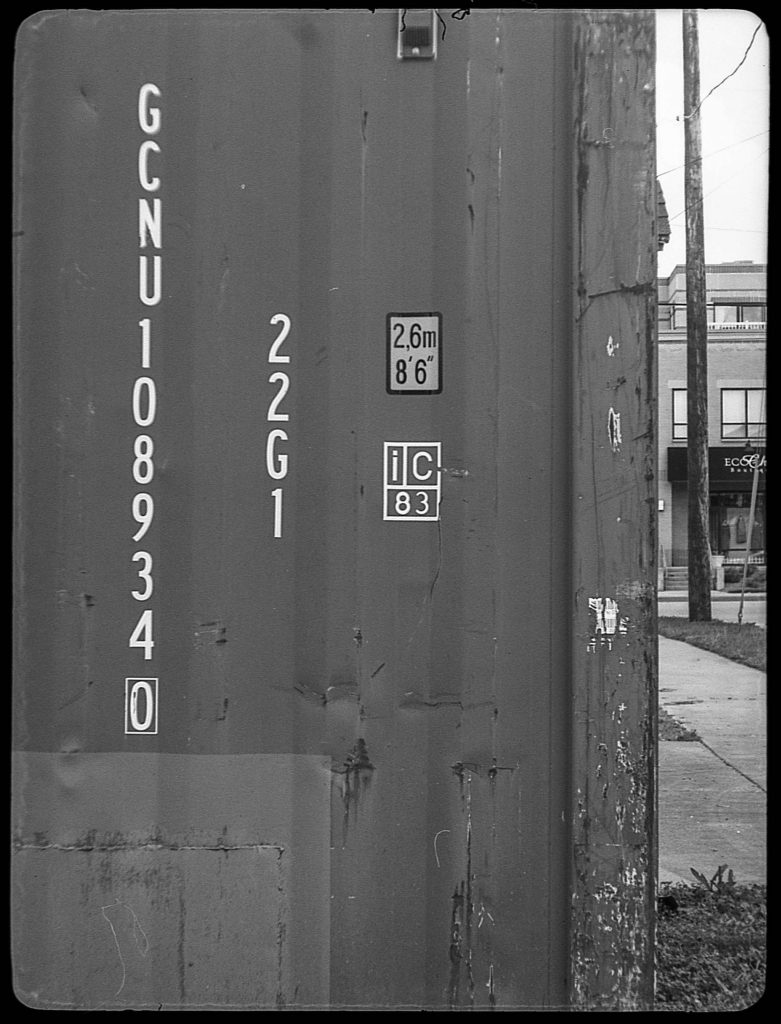
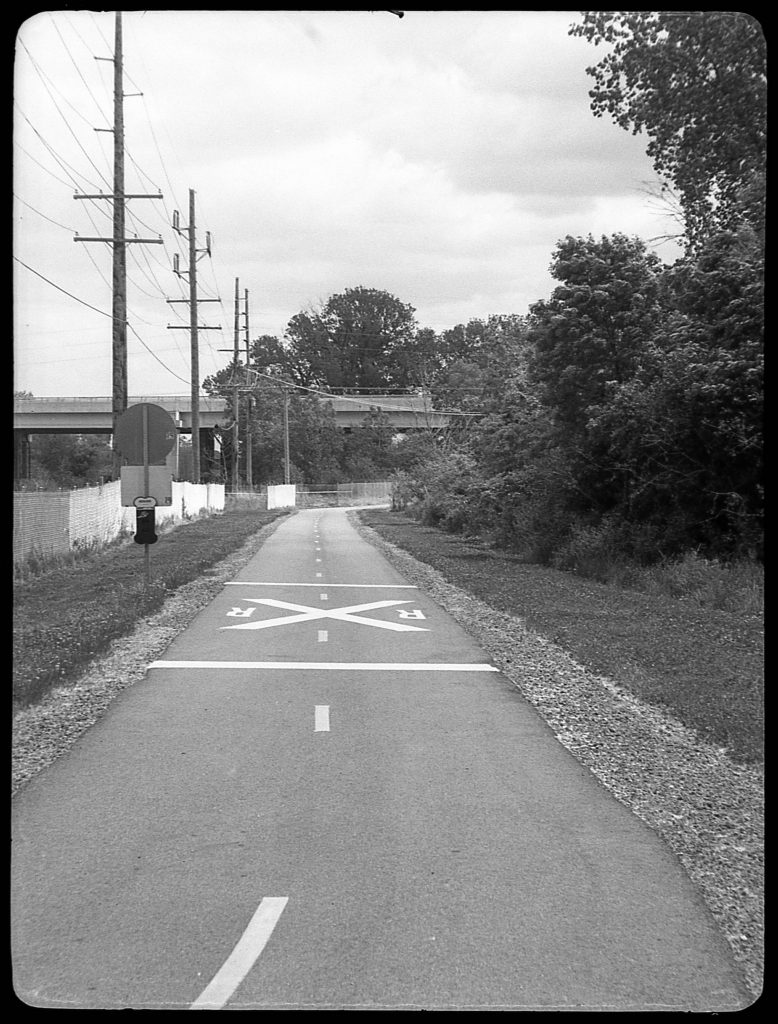
Hey-O! I recently bought one of these cameras from a flea market in excellent and perfectly functioning condition, with the leather carry case and all. Problem is it only came with one of the two film cartridges. Have you experimented with using more modern cartridges, and if so, do you have any that worked well enough to use daily?
Thank you so much!!
-RG
You really cannot use regular 35mm cassettes in these cameras as they simply won’t fit. It would be possible to use newer Rapid cassettes for film that was made in the 1960s in both Japan and Germany, but beyond that, you’ll need to find an original Memo or Karat cassette for it to work correctly.